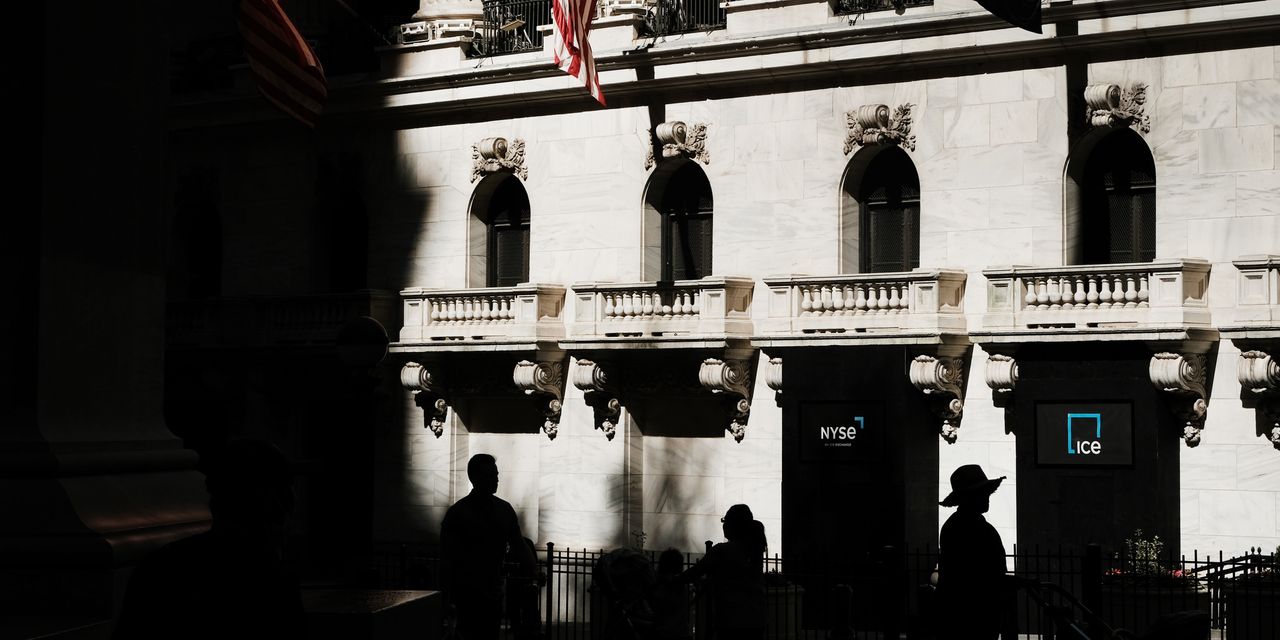U.S. stocks jumped Friday, with the Dow Jones Industrial Average closing up 701 points, after the May jobs report showed the labor market is in surprisingly strong shape despite the Federal Reserve’s aggressive tightening of monetary policy in the past year.
How did stocks trade?
-
The Dow Jones Industrial Average
DJIA,
+2.12%
jumped 701.19 points, or 2.1%, to close at 33,762.76. -
The S&P 500
SPX,
+1.45%
gained 61.35 points, or 1.5%, to finish at 4,282.37. -
The Nasdaq Composite
COMP,
+1.07%
rose 139.78 points, or 1.1%, to end at 13,240.77.
For the week, the Dow climbed 2%, the S&P 500 increased 1.8% and the Nasdaq advanced 2%. The S&P 500 booked a third straight week of gains while the tech-heavy Nasdaq rose for a sixth straight week in its longest winning streak since January 2020, according to Dow Jones Market Data.
What drove markets?
Stocks climbed sharply Friday, as investors cheered the Senate passing the debt-ceiling bill Thursday night while weighing the U.S. government’s latest monthly employment report.
The Bureau of Labor Statistics report Friday showed the U.S. economy added 339,000 jobs in May, far surpassing Wall Street expectations for 190,000. The number of jobs created in March and April was also revised higher by roughly 93,000 combined.
The employment report pointed to a resilient economy, possibly leading some investors to believe a recession is further away than previously thought, said Brian Vendig, president at MJP Wealth Advisors, in a phone interview Friday. That, along with the debt-ceiling bill being passed by the Senate, appeared to lift stocks Friday, he said.
See: Jobs report shows big 339,000 gain in May. U.S. economy still going strong
Many investors are now anticipating the Federal Reserve might pause its interest rate hikes this month, despite the stronger-than-expected job gains in May, as the labor market report also showed that the unemployment rate rose to 3.7% and hourly earnings growth matched consensus forecasts, according to Vendig.
Average hourly earnings rose 0.3% in May. The increase being in line with expectations helped assuage investors’ fears that wage growth spiraling out of control would fuel high and sticky inflation, he said.
“What I’m optimistically hoping for is they take a pause,” Vendig said of the Fed’s rate hikes. That would give “more time for their policies to play out,” he said, citing “lag effects” from the central bank’s tightening of monetary policy over the past year in its bid to tame high inflation.
Meanwhile, the Dow Jones Industrial Average on Friday saw its biggest daily gain in points since the end of November, according to Dow Jones Market Data. The index’s percentage increase on Friday was the largest since Jan. 6.
As for the S&P 500, the benchmark finished slightly below the level it would need to hit to exit its bear market.
Read: S&P 500 nears bear-market exit. Will Big Tech’s rally finally spread to the broader stock market?
“The report today continues to point to a soft landing for the economy and should keep market expectations for a July hike in play,” Ellen Zentner, chief U.S. economist at Morgan Stanley, said of the May jobs data released Friday. “We do not believe today’s report was strong enough to meet the bar for the Fed to hike in June, but raises the risk that the Fed could hike in July.”
Fed-funds-futures traders on Friday saw a 77.1% chance of the Fed pausing rates at its June policy meeting, and a 22.9% probability of a quarter-point hike, according to the CME’s FedWatch Tool, at last check.
Senior Fed officials said earlier this week that they would prefer to keep rates on hold when the Fed’s upcoming meeting ends on June 14, but they signaled openness to raising rates further later in the year. The Fed raised its policy rate by roughly 5 percentage points in 2022 through early 2023, the fastest pace since the 1980s.
Meanwhile, the Senate sent its debt-ceiling bill to President Joe Biden’s desk to be signed into law, which will keep the U.S. from running out of cash to pay all its bills.
In the U.S. stock market, “there’s certainly the jubilation” over the debt-ceiling bill finally being passed by the Senate, said Sandi Bragar, chief client officer at wealth management firm Aspiriant, in a phone interview Friday. “The government really was letting that come down to the wire.”
See: Senate passes debt-ceiling bill in 63-36 vote, sending it to Biden to get signed into law
Companies in focus
—Barbara Kollmeyer contributed to this report.
Read the full article here













